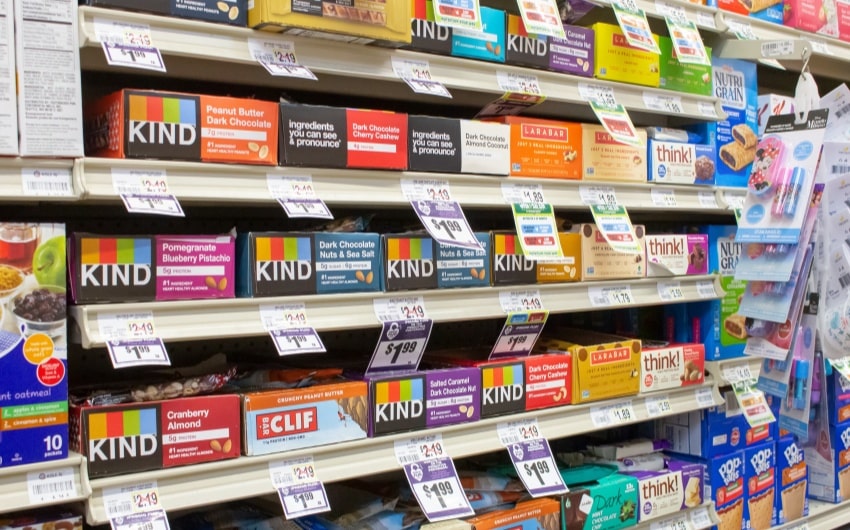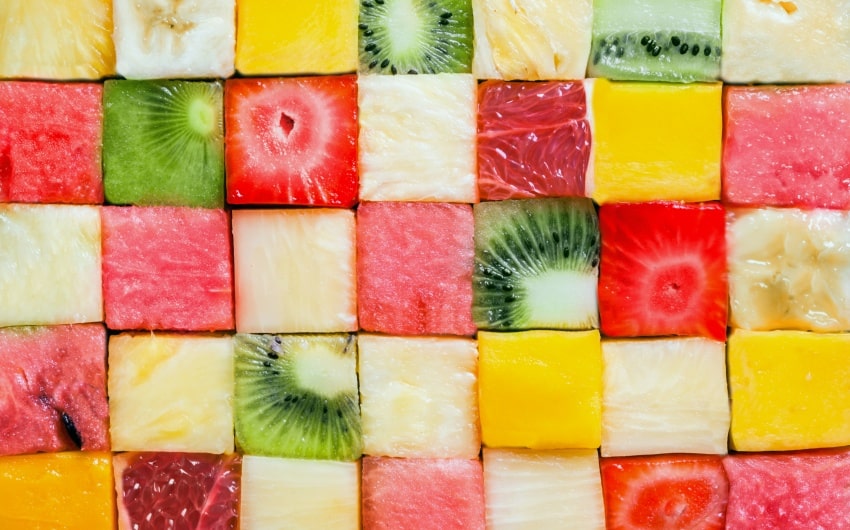Discover Healthy Foods That Don’t Have Artificial Dyes
Finding foods that don’t have artificial dyes can be a game-changer for your health. Artificial dyes are everywhere, from candies to cereals, and while they make food look appealing, they come with potential health risks.
Whether you’re concerned about allergies, hyperactivity, or just want to eat cleaner, avoiding artificial dyes is a smart choice. In this article, we’ll explore a variety of delicious and nutritious options that are free from artificial dyes. From vibrant fruits and vegetables to tasty snacks and drinks, discover how easy and satisfying it can be to make healthier choices.
What Are Artificial Dyes?

Artificial dyes are synthetic chemicals added to food and drinks to produce specific colors. They are often listed on ingredient labels by their color and number, such as Red 40, Yellow 5, and Blue 1. These dyes are created through chemical processes and are not derived from natural sources.
Common Artificial Dyes Found in Foods
1. Red 40 (Allura Red AC): One of the most common dyes, found in everything from candies and snacks to beverages and desserts.
2. Yellow 5 (Tartrazine): Frequently used in processed foods, cereals, and soft drinks.
3. Blue 1 (Brilliant Blue FCF): Often found in baked goods, beverages, and candies.
4. Yellow 6 (Sunset Yellow FCF): Used in a variety of foods, including baked goods, candies, and beverages.
5. Green 3 (Fast Green FCF): Less common but used in some beverages, candies, and desserts.
6. Red 3 (Erythrosine): Found in candies, cake decorating gels, and some processed foods.
Potential Health Risks and Controversies
The use of artificial dyes in food has been a subject of controversy and debate for years. While they are approved for use by regulatory agencies like the FDA, there are ongoing concerns about their safety and potential health risks. Some of the potential health risks and controversies include:
1. Allergies and Sensitivities: Some individuals may experience allergic reactions or sensitivities to certain artificial dyes. Symptoms can include hives, asthma, and other allergic reactions.
2. Hyperactivity in Children: Studies have suggested a link between artificial dyes and hyperactivity in children. The most well-known study is the Southampton study, which found that certain artificial colors and preservatives could increase hyperactive behavior in children.
3. Carcinogenic Concerns: Some studies have raised concerns about the potential carcinogenic effects of certain artificial dyes, though the evidence is not conclusive. For example, Red 3 has been shown to cause cancer in animal studies, leading to calls for further research and potential regulation.
4. Behavioral Changes: There is some evidence that artificial dyes may affect behavior and cognitive function in both children and adults. This has led to increased scrutiny and calls for more natural alternatives.
Regulatory Perspectives
Different countries have varying regulations and guidelines regarding the use of artificial dyes in food. In the United States, the FDA regulates and approves the use of artificial dyes, requiring that they be tested for safety. However, some dyes approved in the U.S. are banned or restricted in other countries due to health concerns. For example, the European Union requires warning labels on foods containing certain artificial dyes, alerting consumers to the potential risk of hyperactivity in children.
The Push for Natural Alternatives
As awareness of the potential health risks of artificial dyes grows, there is increasing demand for natural alternatives. Natural food colorings, derived from plants, fruits, and vegetables, are becoming more popular as consumers seek safer and healthier options. For those looking for healthy food supplements, organic reishi mushroom powder offers a natural way to support wellness while avoiding synthetic additives. These natural alternatives not only reduce the risk of adverse health effects but also provide additional nutritional benefits.
Whole Foods Without Artificial Dyes
Whole foods are unprocessed or minimally processed foods that retain their natural nutrients and colors. Choosing whole foods without artificial dyes ensures that you are consuming products free from synthetic additives, providing a healthier and more natural diet. Here’s a closer look at various categories of whole foods that don’t have artificial dyes:
Fruits and Vegetables
- Apples
- Carrots
- Blueberries
- Spinach
- Bell Peppers
- Beets
- Tomatoes
- Sweet Potatoes
- Kale
- Strawberries
Nuts and Seeds
- Almonds
- Chia Seeds
- Sunflower Seeds
- Flaxseeds
- Walnuts
- Pumpkin Seeds
- Pistachios
- Cashews
- Sesame Seeds
- Hazelnuts
Grains and Legumes
- Brown Rice
- Quinoa
- Lentils
- Oats
- Chickpeas
- Black Beans
- Farro
- Barley
- Kidney Beans
- Wild Rice
Dairy Products
- Plain Yogurt
- Milk
- Cheese
- Butter
- Cottage Cheese
Meat and Fish
- Chicken
- Beef
- Fish
- Pork
- Turkey
Packaged Foods Without Artificial Dyes

Choosing packaged foods without artificial dyes is a great way to maintain a healthier diet while still enjoying the convenience of ready-made products. Here are examples of various categories of packaged foods that don’t contain artificial dyes:
Snacks and Sweets
1. Organic Gummy Bears: Look for brands like Surf Sweets or Annie’s that use natural fruit juices for coloring.
2. Fruit Snacks: Brands like Stretch Island and Mott’s offer dye-free options.
3. Granola Bars: Larabar and KIND bars often use natural ingredients and avoid artificial dyes.
4. Chips: Check brands like Late July and Kettle Brand for options without artificial dyes.
5. Popcorn: SkinnyPop and Boom Chicka Pop offer natural, dye-free popcorn.
Beverages
1. Natural Juice Brands: Look for juices from brands like Honest Kids and R.W. Knudsen, which use only natural fruit colors.
2. Herbal Teas: Brands like Tazo and Celestial Seasonings offer a variety of naturally colored herbal teas.
3. Sparkling Water: LaCroix and Spindrift are popular choices that use natural flavors and colors.
4. Coconut Water: Harmless Harvest and Vita Coco provide naturally colored coconut water.
5. Smoothies: Brands like Naked Juice and Bolthouse Farms offer smoothie options without artificial dyes.
Processed Foods
1. Cereals: Nature’s Path and Barbara’s offer cereals made without artificial dyes.
2. Granola: Brands like Bear Naked and Purely Elizabeth use natural ingredients and colors.
3. Pasta: Banza and Tolerant offer dye-free pasta options, often made from chickpeas or lentils.
4. Sauces: Rao’s Homemade and Primal Kitchen provide natural, dye-free pasta sauces.
5. Bread: Look for whole grain or organic bread from brands like Ezekiel and Dave’s Killer Bread.
Condiments
1. Ketchup: Annie’s and Sir Kensington’s offer ketchup made with natural ingredients.
2. Mustard: Brands like Organicville and Annie’s provide mustard without artificial dyes.
3. Mayonnaise: Look for natural options from brands like Just Mayo and Primal Kitchen.
4. Salad Dressings: Newman’s Own and Tessemae’s offer a range of dye-free dressings.
5. Hot Sauce: Cholula and Frank’s RedHot provide natural hot sauce options.
Frozen Foods
1. Ice Cream: Brands like Häagen-Dazs and Ben & Jerry’s offer dye-free ice cream options.
2. Frozen Vegetables: Cascadian Farm and Whole Foods 365 provide frozen veggies without added dyes.
3. Frozen Meals: Look for brands like Amy’s Kitchen and Evol for natural frozen meal options.
4. Frozen Fruit Bars: Outshine and Julie’s Organic offer dye-free fruit bars.
5. Frozen Pizzas: Amy’s Kitchen and Caulipower provide natural, dye-free frozen pizzas.
Baking Supplies
1. Cake Mixes: Simple Mills and Bob’s Red Mill offer natural cake mix options.
2. Frostings: Miss Jones Baking Co. and Wholesome provide dye-free frostings.
3. Baking Chocolate: Look for natural baking chocolate from brands like Enjoy Life and Ghirardelli.
4. Sprinkles: India Tree and Supernatural offer natural, dye-free sprinkles.
5. Food Coloring: Watkins and ColorKitchen provide natural food coloring options.
Snack Bars
1. Protein Bars: RXBAR and No Cow offer protein bars made with natural ingredients.
2. Energy Bars: CLIF Bar and Larabar provide natural, dye-free energy bars.
3. Nut Bars: KIND and Nature Valley offer natural nut bars without artificial dyes.
4. Fruit and Nut Bars: LÄRABAR and That’s it. offer dye-free fruit and nut bars.
5. Snack Mixes: Back to Nature and Trader Joe’s offer natural snack mixes.
Baby and Toddler Foods
1. Baby Purees: Brands like Ella’s Kitchen and Happy Baby offer organic baby purees without artificial dyes.
2. Toddler Snacks: Look for natural snacks from brands like Plum Organics and Gerber’s Organic.
3. Baby Cereals: Earth’s Best and Happy Baby provide baby cereals made with natural ingredients.
4. Teething Biscuits: Brands like NurturMe and Happy Baby offer teething biscuits without artificial colors.
5. Puffs and Yogurt Melts: Happy Baby and Gerber’s Organic offer dye-free puffs and yogurt melts.







